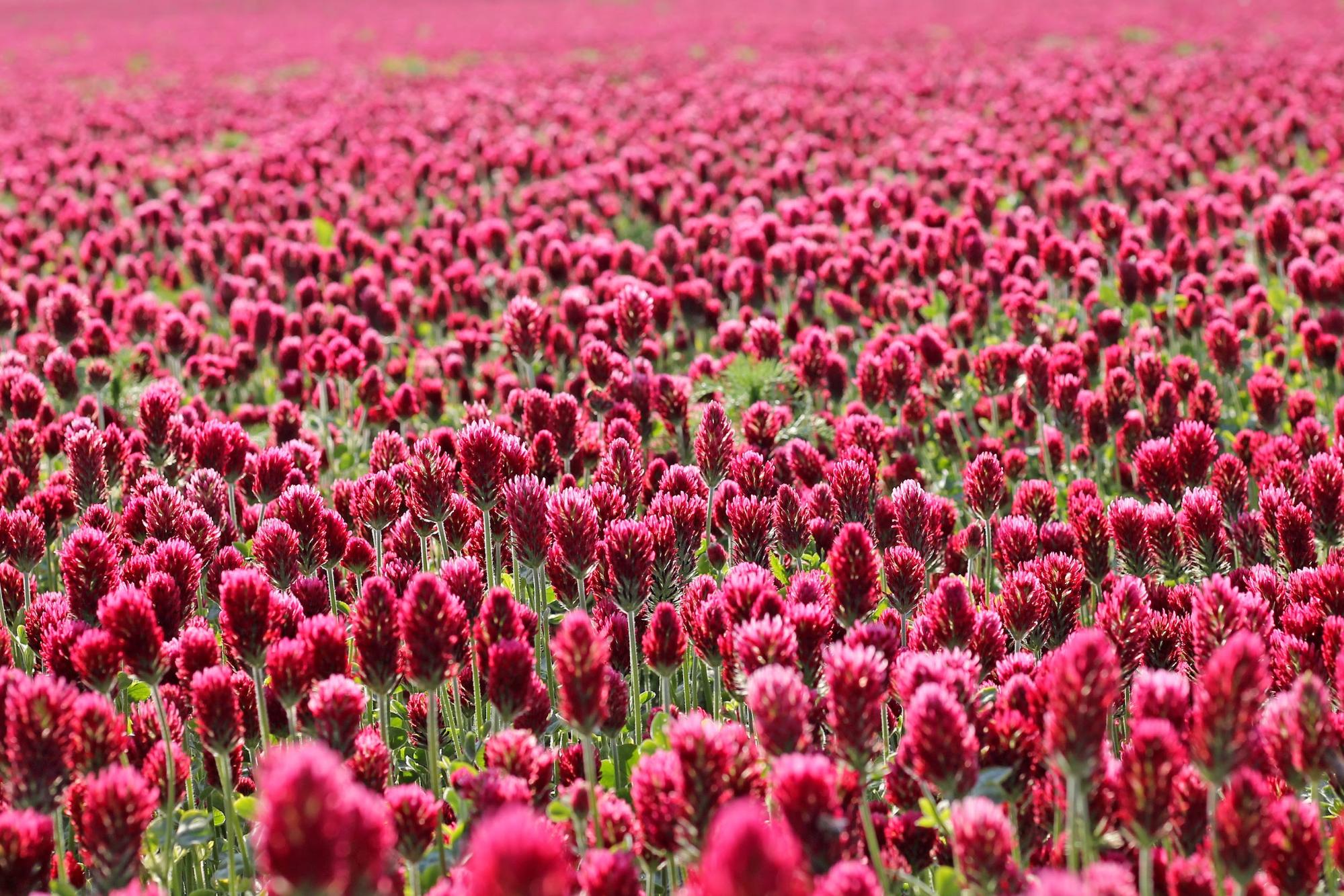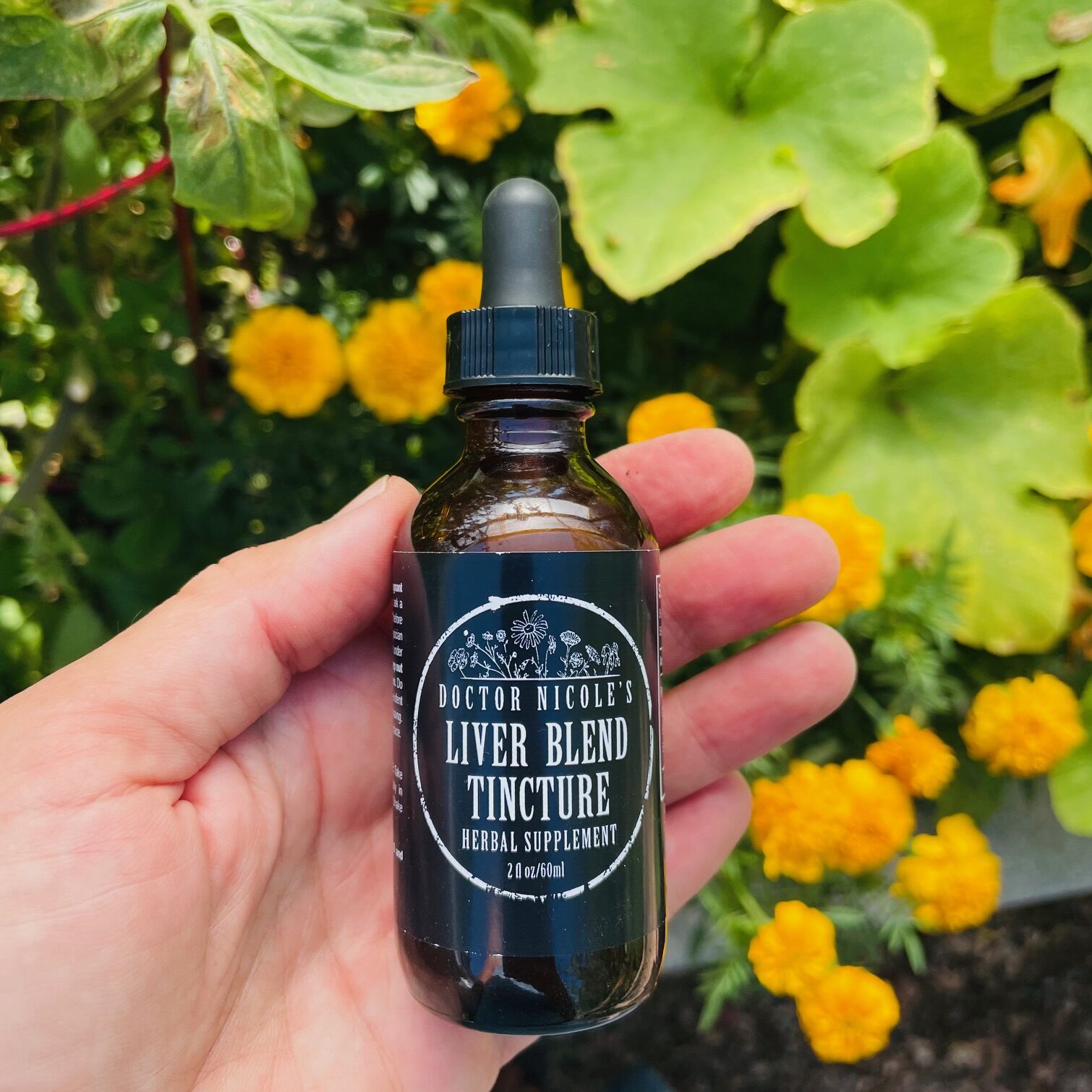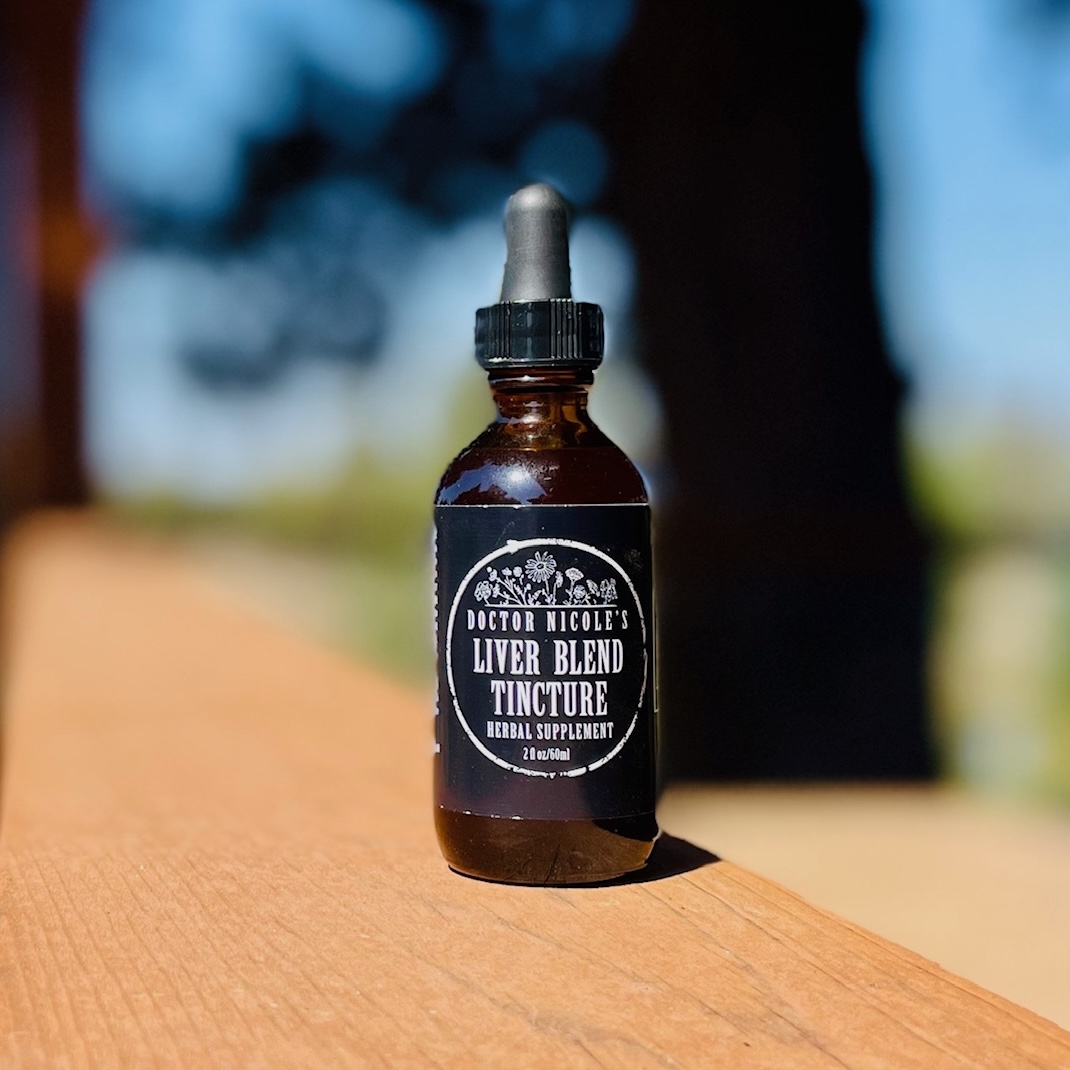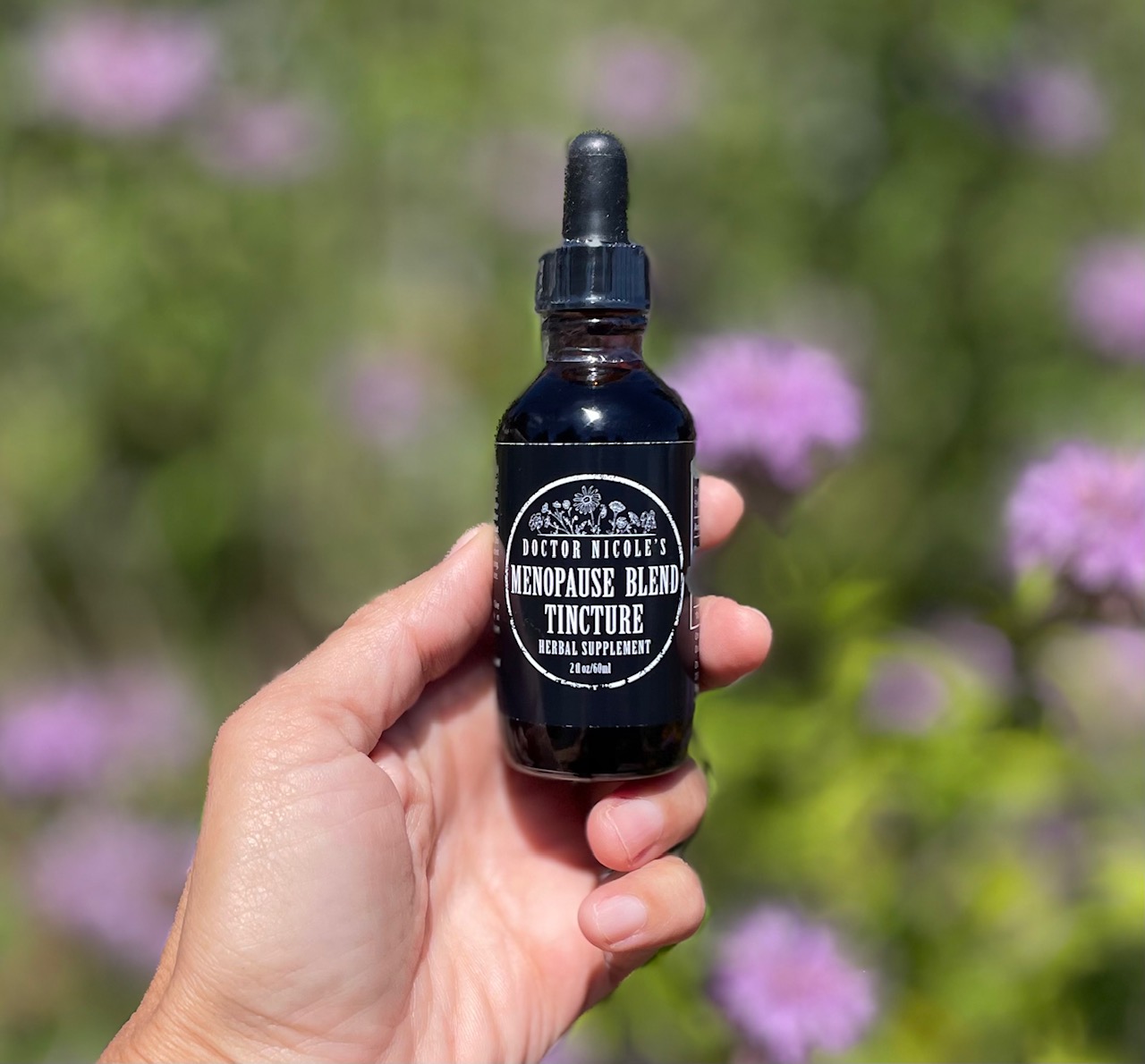Estrogen, the Liver, and Midlife Transitions
Even for women who are in good health, the hormonal shifts around perimenopause and menopause can compromise the function of the liver and increase the risk of non-alcoholic fatty liver disease (NAFLD). Why? Because declining estrogen levels impact how the liver handles cholesterol. This doesn’t just put your liver at risk — it can also lead to heart disease, obesity, and diabetes. Fat also begins to settle in the midsection during midlife, which compounds the stress on your liver. In this post, we explore how diet, lifestyle habits, and herbal remedies can help to keep your liver healthy and happy. Let’s begin.

The Power of Food
It’s important to keep in mind that liver disease is often silent without symptoms until the condition has progressed to a critical stage. This is why we want to take steps to encourage liver health now rather than later — particularly as we age and journey through menopause. Eating a liver-protective diet can help to offset damage, promote proper function, and give this important organ the building blocks for repair.
Focus on a diet that is rich in antioxidants, fiber, lean protein, and healthy fats — while avoiding processed and fried foods, trans fats, refined sugar, and artificial flavors/colorings, which promote inflammation, encourage insulin resistance, and lead to fat accumulation in the liver and elsewhere.
A good example of a liver-friendly diet is green Mediterranean. It is loaded with beneficial antioxidants, fiber, and omega-3 fatty acids. Specific foods that are particularly helpful for supporting the liver include:1,2,3,4,5,6
- Lemons and grapefruit
- Artichokes
- Lentils, chickpeas, soy beans, and green peas
- Nuts
- Berries
- Whole grains
- Sunflower seeds
- Salmon
- Cruciferous vegetables
- Beets
- Garlic
- Coffee (no cream/sugar)
- Raw leafy greens (such as spinach and arugula)
On the flip side, white bread, rice, and pasta; cakes, cookies, and sweets; seed oils; sugary drinks and fruit juice; excess salt; red meat; alcoholic beverages; cheese and full-fat dairy; and saturated fat should be avoided.
Butter, fatty cuts of meat, sausages, and cured meats put stress on the liver and promote NAFLD. Healthy alternatives include extra-virgin olive oil, avocados, nut butter, and fatty fish.
Lifestyle Support
Getting enough exercise and deep, quality rest are also important for liver health to help support weight loss, lower blood lipid levels, support detoxification, improve insulin sensitivity, and manage diabetes — which often goes hand in hand with liver disease.
Aim for at least 30 minutes of aerobic exercise per day and practice good sleep hygiene by avoiding devices two hours before sleep, going to bed and getting up at the same time each day, and creating a routine of relaxing habits in the evening (reading a physical book, drinking a mug of herbal tea, taking a hot bath, etc.). For an extra level of support, see our Sleep Blend in the apothecary.
Don’t forget to drink enough water throughout the day to flush out toxins and ease the burden on your liver. Even better: start your day with lemon water 20 minutes before breakfast to jumpstart detoxification.
Cleanse & Renew: Herbal Allies for Menopause Relief and Liver Health
If you need extra help balancing the female hormonal system, our potent Menopause Blend contains both black cohosh and red clover — two traditional herbal remedies used to help ease symptoms and health concerns of menopause. Often used before bedtime to combat nighttime hot flashes and insomnia, it may be used for daytime support as well.
I FEEL LIKE MYSELF AGAIN WITH THIS MENOPAUSE BLEND!
“Amazing relief and finally a feeling of normality.” -Margie
For detoxification and liver-specific support, my top herbal recommendations are milk thistle, dandelion, and schisandra berry, all of which are found in our Liver Blend. Here are the unique, science-backed benefits of each:
DANDELION ROOT (TARAXACUM OFFICINALE)
- Known as a diuretic
- Helps lower liver inflammation and lipid accumulation in the liver7
- Helps flush toxins from the liver
- A good source of inulin to promote healthy gut bacteria
- Enhances detoxification of the liver, gallbladder, and kidneys8
MILK THISTLE SEED (SILYBUM MARIANUM)
- Contains silymarin, which may help with liver repair and protection9
- Helps detoxify and support the liver by helping clear environmental toxins, chemotherapy toxins, poison, and harmful drugs from the body10
- Exhibits antioxidant, lipid-lowering, antihypertensive, antidiabetic, antiatherosclerotic, and anti-obesity effects due to the bioactive compound silymarin.10
- Known to assist with cirrhosis, fatty liver disease, jaundice, and hepatitis
SCHISANDRA BERRIES (SCHISANDRA CHINENSIS)
- Promotes liver regeneration
- Helps address non-alcoholic fatty liver disease (NAFLD)11
- Helpful to support kidney, neurological, gastrointestinal, and liver disorders12
For women embracing life after 40, balance and vitality aren’t just goals — they’re essentials. Medicinal herbs offer a time-tested and science-backed option to restore hormonal harmony, while also supporting overall liver health. Rediscover your energy, clarity, and vibrancy by visiting my apothecary today!
Nicole Apelian
Nicole’s Apothecary Products in this Post
References
- Hayat, U., Siddiqui, A. A., Okut, H., Afroz, S., Tasleem, S., & Haris, A. (2021). The effect of coffee consumption on the non-alcoholic fatty liver disease and liver fibrosis: A meta-analysis of 11 epidemiological studies. Annals of hepatology, 20, 100254. https://doi.org/10.1016/j.aohep.2020.08.071
- Mokhtari, E., Farhadnejad, H., Salehi-Sahlabadi, A., Najibi, N., Azadi, M., Teymoori, F., & Mirmiran, P. (2021). Spinach consumption and nonalcoholic fatty liver disease among adults: a case-control study. BMC gastroenterology, 21(1), 196. https://doi.org/10.1186/s12876-021-01784-8
- Mega, A., Marzi, L., Kob, M., Piccin, A., & Floreani, A. (2021). Food and Nutrition in the Pathogenesis of Liver Damage. Nutrients, 13(4), 1326. https://doi.org/10.3390/nu13041326
- Stachowska, E., Maciejewska-Markiewicz, D., Palma, J., Mielko, K. A., Qasem, B., Kozłowska-Petriczko, K., Ufnal, M., Sokolowska, K. E., Hawryłkowicz, V., Załęska, P., Jakubczyk, K., Wunsch, E., Ryterska, K., Skonieczna-Żydecka, K., & Młynarz, P. (2022). Precision Nutrition in NAFLD: Effects of a High-Fiber Intervention on the Serum Metabolome of NAFD Patients-A Pilot Study. Nutrients, 14(24), 5355. https://doi.org/10.3390/nu14245355
- Sato, K., Gosho, M., Yamamoto, T., Kobayashi, Y., Ishii, N., Ohashi, T., Nakade, Y., Ito, K., Fukuzawa, Y., & Yoneda, M. (2015). Vitamin E has a beneficial effect on nonalcoholic fatty liver disease: a meta-analysis of randomized controlled trials. Nutrition (Burbank, Los Angeles County, Calif.), 31(7-8), 923–930. https://doi.org/10.1016/j.nut.2014.11.018
- Soleimani, D., Paknahad, Z., & Rouhani, M. H. (2020). Therapeutic Effects of Garlic on Hepatic Steatosis in Nonalcoholic Fatty Liver Disease Patients: A Randomized Clinical Trial. Diabetes, metabolic syndrome and obesity : targets and therapy, 13, 2389–2397. https://doi.org/10.2147/DMSO.S254555
- Davaatseren, M., Hur, H. J., Yang, H. J., Hwang, J. T., Park, J. H., Kim, H. J., Kim, M. J., Kwon, D. Y., & Sung, M. J. (2013). Taraxacum official (dandelion) leaf extract alleviates high-fat diet-induced nonalcoholic fatty liver. Food and chemical toxicology : an international journal published for the British Industrial Biological Research Association, 58, 30–36. https://doi.org/10.1016/j.fct.2013.04.023
- Abenavoli, L., Capasso, R., Milic, N., & Capasso, F. (2010). Milk thistle in liver diseases: past, present, future. Phytotherapy research : PTR, 24(10), 1423–1432. https://doi.org/10.1002/ptr.3207 https://pubmed.ncbi.nlm.nih.gov/20564545/
- Hackett, E. S., Twedt, D. C., & Gustafson, D. L. (2013). Milk thistle and its derivative compounds: a review of opportunities for treatment of liver disease. Journal of veterinary internal medicine, 27(1), 10–16. https://doi.org/10.1111/jvim.12002
- Tajmohammadi, A., Razavi, B. M., & Hosseinzadeh, H. (2018). Silybum marianum (milk thistle) and its main constituent, silymarin, as a potential therapeutic plant in metabolic syndrome: A review. Phytotherapy research : PTR, 32(10), 1933–1949. https://doi.org/10.1002/ptr.6153
- Leong, P. K., & Ko, K. M. (2016). Schisandrin B: A Double-Edged Sword in Nonalcoholic Fatty Liver Disease. Oxidative medicine and cellular longevity, 2016, 6171658. https://doi.org/10.1155/2016/6171658
- Zhang, F., Zhai, J., Weng, N., Gao, J., Yin, J., & Chen, W. (2022). A Comprehensive Review of the Main Lignan Components of Schisandra chinensis (North Wu Wei Zi) and Schisandra sphenanthera (South Wu Wei Zi) and the Lignan-Induced Drug-Drug Interactions Based on the Inhibition of Cytochrome P450 and P-Glycoprotein Activities. Frontiers in pharmacology, 13, 816036. https://doi.org/10.3389/fphar.2022.816036










